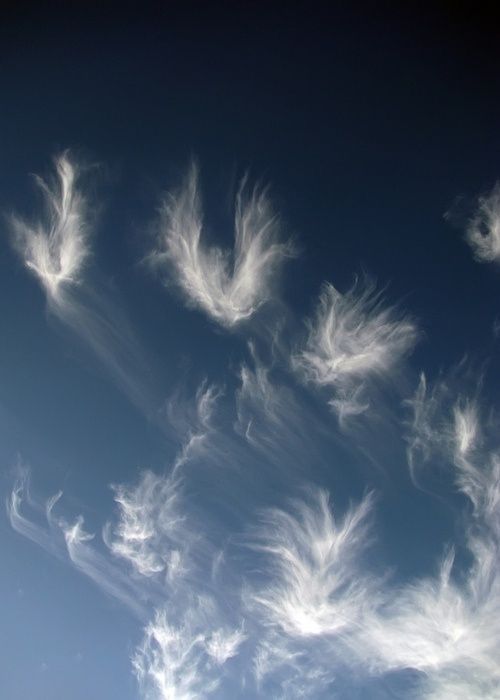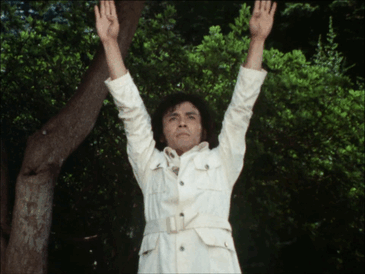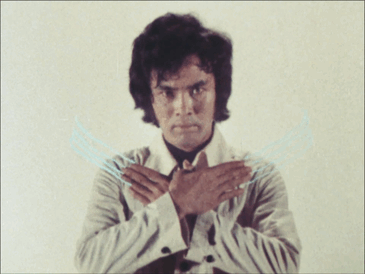#goro watari
Text
youtube
someone kindly translated the indie movie U.F.O. [2004 GOD X DOG Production] soundtrack by Sadesper Record! THANK YOU atibspook!
#sadesper record#goro watari#watchman#narasaki#u.f.o.#ufo#indie movie#indie film#god x dog production#god x dog#2004#Youtube
5 notes
·
View notes
Text
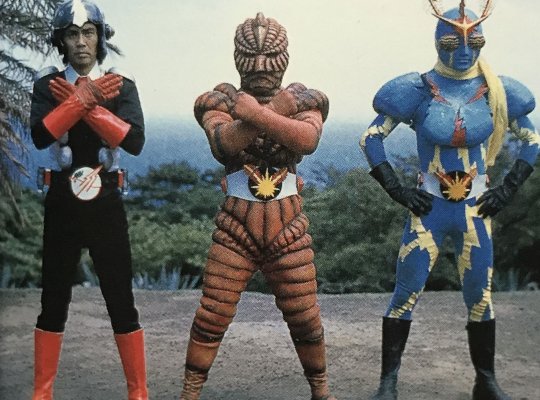
The three stages of Inazuman:
Goro Watari, Sunburned Michelin Man Sanagiman, Inazuman.
9 notes
·
View notes
Text

Ohaguro or teeth blackening was a common practice for aristocratic married women in Edo period, Japan and some men followed it too. There were a couple reasons for the trend, first being that richer women were able to afford regular makeup which comprised of a full white face as pale skin was considered beautiful.
With the absence of dental care, teeth were subject to appearing misshapen, discoloured so it was found prudent to blacken them. It was supposed to act as a cover for any dental imperfections that would otherwise stand out due to the white paint. It was also said to be a protective agent. Conversely, the look of rotten teeth were quite fashionable as it showed how many sweets wealthy women could afford to eat.

Considering Akemi, she doesn't fit the aristocratic beauty standard either. The Shogun's representatives called her "too old" with "a few good uses left." Aristocratic women, especially aspired to be plumper as it represented wealth and Akemi is a lot leaner by that standard. So in the show's cultural context, Akemi should've been glad to have her teeth blackened as her title rose to "Lady", she became wife in the Shogun's family and attained her ultimate mark of womanhood. To be ideal enough to be chosen as a wife to the Shogun's son.
This is where Akemi's individuality and wisdom falls in, she doesn't mind presenting herself beautifully and being feminine, however there is fine line between being forced to perform as a woman and doing it out of her own volition. With Taigen, Goro, Watari, Mizu and eventually Takayoshi, Akemi uses her feminine charm willingly. Being demure, appearing harmless, sweet and sexually inviting to get something out of the interaction.

She uses feminine talents like poetry, flattery and wit but not witty enough to make the man feel less than. However, at the time of arranging her marriage with the Shogun's son, Akemi was blindsided. She wanted to stay close to home, had apprehension against being raped/used/forcibly impregnated by the Shogun's son who was said to be a sadistic tyrant who likely killed his first wife for not being "wifely (read submissive) enough."
Of course Akemi was reluctant to blacken her teeth because it would be like being officially branded as a commodity. Thankfully, Takayoshi turned out to not be a brute and Akemi is more confident about her position in her new family.

It's ironic that out of all the "men," Akemi used her charms against, Mizu is the only one who saw through it. Likewise, Mizu couldn't uphold her ruse of tough masculinity with Akemi who told Mizu that "youre not the killer you pretend to be" and "your face isn't even so scary, you're just angry."
Which is a HUGE flip from how vicious the men get. Hachi with the gun, Taigen, Shindo, Hamata, the Four Fanged, the Thousand Clawed completely bought how manly she was, resorting to name calling and dirty tricks because they felt insecure. It means something to me that Akemi, pinpointed Mizu's disposition without seeing her naked, unlike Ringo. And Mizu found Akemi's weak spots without having her in a position of sexual engagement, like Taigen or Takayoshi
#blue eye samurai#mizu blue eye samurai#akemi blue eye samurai#blue eye samurai mizu#bes akemi#akemizu#mizu#mizu x akemi#taigen blue eye samurai#mizemi#ringo blue eye samurai#netflix blue eye samurai#bes netflix
342 notes
·
View notes
Note
Are you familiar with the Tezuka Star System? It was essentially Tezuka reusing characters as actors for different stories (i.e., a character who was an anti-hero in a sci-fi story shows up in a horror story as an antagonist). Ishinomori also had a star system, with one example being him reusing his 1961 character Mutant Sabu for Inazuman's Goro Watari.
are you just saying they like re-used concepts
4 notes
·
View notes
Audio
“Torso”
by: Goro Watari
from: Boogiepop Phantom
20 notes
·
View notes
Audio
goro watari - revt
1 note
·
View note
Photo

Graveyard of Honor will be released on Blu-ray on September 8 via Arrow Video. The two-disc set features both the original 1975 Japanese yakuza film and the 2002 remake of the same name, both based on the Fujita Goro novel.
The 1975 movie is directed by Kinji Fukasaku (Battle Royale), written by Tatsuhiko Kamoi, Hirô Matsuda, and Fumio Kônami, and stars Tetsuya Watari. The 2002 version is directed by Takashi Miike (Audition, Ichi the Killer), written by Shigenori Takechi (Izo), and stars Goro Kishitani.
Both films feature new artwork by Ian MacEwan with their original poster on the reverse side. They're housed inside a slipcase with more MacEwan art. A collector's booklet featuring writing on both films by Jasper Sharp is included.
The 1975 is presented in high definition with the original lossless Japanese PCM 1.0 mono audio and English subtitles. The 2002 film is presented in high definition with the original lossless Japanese PCM 2.0 stereo audio and English subtitles.
Special features are listed below.

Disc 1: Graveyard of Honor (1975):
Audio commentary by film critic Mark Schilling (new)
Like a Balloon: The Life of a Yakuza - Visual essay by Projection Booth podcast’s Mike White (new)
A Portrait of Rage - An appreciation of Kinji Fukasaku’s films with interviews with filmmakers, scholars, and friends of the director
On-set iterview with assistant director Kenichi Oguri
Theatrical trailer
Imagery gallery
Set during the turbulent post-war years, Kinji Fukasaku’s original 1975 film charts the rise and fall of real-life gangster Rikio Ishikawa (Tetsuya Watari). Shot through with the same stark realism and quasi-documentarian approach as Fukasaku’s earlier Battles Without Honor and Humanity, Fukasaku nonetheless breaks new ground through his portrayal of a gangster utterly without honor or ethics, surviving by any means necessary in a world of brutal criminality.
Disc 2: Graveyard of Honor (2002):
Audio commentary by Takashi Miike biographer Tom Mes (new)
Visual essay by film critic Kat Ellinger (new)
Interview special with director Takashi Miike and actors Goro Kishitani and Narimi Arimori
Premiere special with director Takashi Miike and actors Goro Kishitani and Narimi Arimori
Making-of featurette
Making-of teaser
EPK interviews with director Takashi Miike and actors Goro Kishitani and Narimi Arimori
Theatrical trailer
Image gallery
Takashi Miike’s 2002 retelling transplants the story to Tokyo at the turn of the millennium. Less a direct remake of Fukasku’s film than a radical reimagining of the same overarching premise, Miike’s film captures both the hedonism and nihilism of the modern Japanese crime scene in deliriously stylish fashion, resulting in a fascinating companion piece to the original that nonetheless stands as its own entity.
#graveyard of honor#takashi miike#kinji fukasaku#japanese film#yakuza#arrow video#ian macewan#dvd#gift#tetsuya watari#goro kishitani#Rikio Ishikawa#yakuza movie#foreign film#japanese movie
9 notes
·
View notes
Text

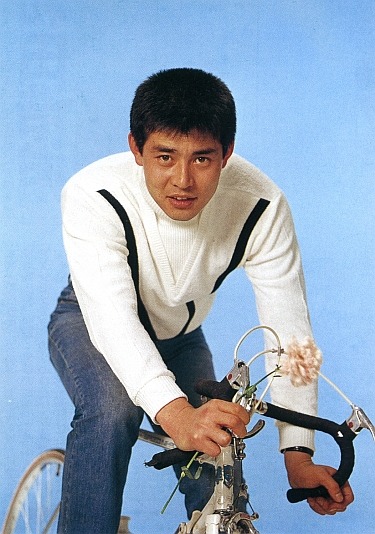

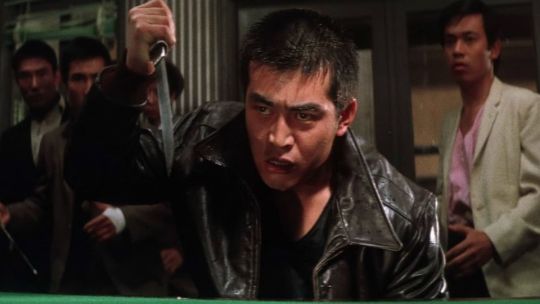
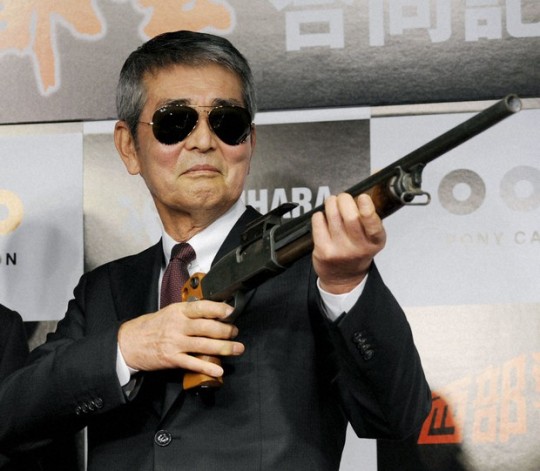
RIP Tetsuya Watari (28.12.1941 - 10.8.2020)
#tetsuya watari#Rip#death ment tw#Outlaw gangster VIP#tokyo drifter#Graveyard of honor#Yakuza graveyard#japanese cinema#Yakuza films#:(#The outlaw gangster series had like#A profound effect on me#I vividly remember my first watch through of them#I bought the boxset on a whim and because it was cheap#I was working late shifts all week and one night got home and watched the first film#And it just blew me away#So the next few nights I would come home from work make some food and watch one of the films#And I loved each one#Goro is just such a great character#He has such a strong code of honour and ethics#It's just that other people keep fucking it up for him#And it's such a brilliant performance#There's so much emotion and feeling barely restrained under the surface#And he cries! Like. That's so unusual in this kind of film. To have your tough guy gangster be brutal and deadly where required#But also actually experience and display real emotion and grief#Anyway yeah I love those films and if you have any interest in Japanese cinema or gangster films#Or revenge cycles or just poor saps caught in above their heads#Wrong place wrong time style#Then I cannot recommend them enough
2 notes
·
View notes
Photo


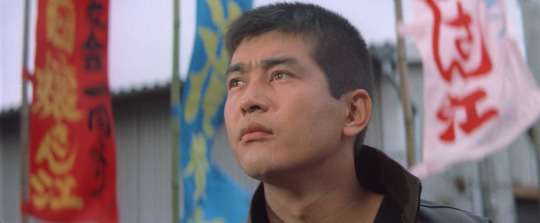
2 notes
·
View notes
Photo
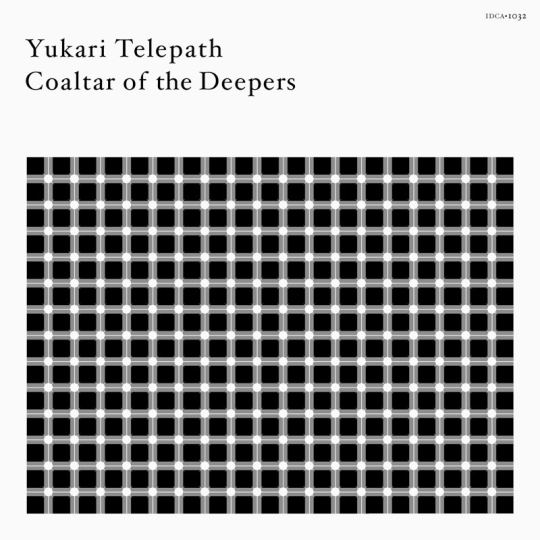
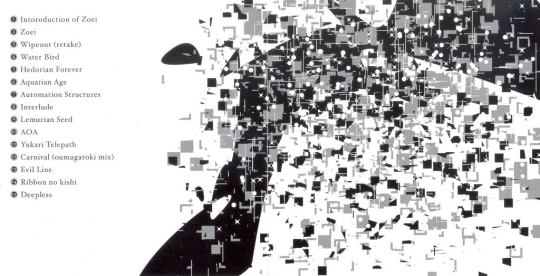



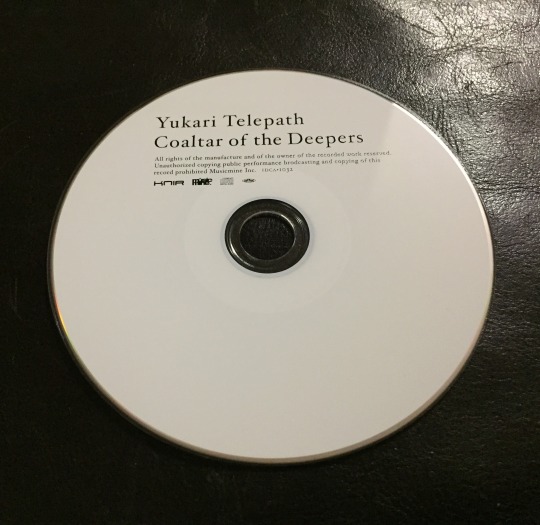
Yukari Telepath
July 4, 2007
(Music Mine / KNIR)
Introduction of Zoei 1:27
Zoei 4:10
Wipeout (retake) 4:12
Water Bird 4:10
Hedorian Forever 5:57
Aquarian Age 5:19
Automation Structures 5:05
Interlude 1:20
Lemurian Seed 5:07
AOA 7:17
Yukari Telepath 4:37
Carnival (oumagatoki mix) 3:02
Evil Line 4:46
Ribbon no kishi 5:02
Deepless 5:59
NARASAKI (vocals, guitar, bass)
KANNO (drums)
Akira (Nakayama) (Plastic Tree) (guitar)
Koji (Hosaka) (guitar)
Watchman (Oshima Watchma / Masaki Oshima) (synth)
recorded at Freedom Studio, little BACH, Andy’s Studio, Sadesper Studio
mixed at Power House Studio, Sadesper Studio
mastered at Bernie Grundman Mastering
artwork by Tomoyoshi Nakayama
booklet:
1: https://cotdfan.tumblr.com/699337569616445440
2: https://cotdfan.tumblr.com/699337848472698881
https://cotdfan.wordpress.com/2022/10/27/yukari-telepath-2007-photo-lyrics-booklet/
scans credit: HAETAE
NOTE:
First editions included a sleeve case with a booklet and lyrics.
Aquarian Age is from the anime movie, Aquarian Age Saga II ~Don't Forget Me~.
In the Aquarian Age movie, the composer is credited as Goro Watari, but the Yukari Telepath lyrics credits reveal that it is NARASAKI.
Spotify: https://open.spotify.com/album/4OxH5Il6IneRFoj2yVnD4w?si=LgBDWNgWToi_rMzg0xwBbQ
Apple: https://music.apple.com/jp/album/yukari-telepath/328295539
mirror: https://cotdfan.wordpress.com/2022/10/27/yukari-telepath-july-4-2007/
#2007#yukari telepath#cd#album#music mine#knir#goro watari#freedom studio#little bach#andy's studio#sadesper studio#power house studio#bernie grundman mastering#tomoyoshi nakayama#tomoyoshi nana nakayama
7 notes
·
View notes
Link
If there was ever an actor that had a face for tough guy Yakuza films, it was Watari.
RIP
0 notes
Note
Are the Mutants "Marginalized minorities" anymore? If anything the last few years of stories have shown it's that someone like Trask might have been right. Granted I only respect 2 Mutants these days: Beak, & Goro Watari.
I don’t know. It’s hard to keep track of. I guess if they’re all living large on Krakoa they can’t really be all that Marginalized. But I noted in a previous response, Mutant are fictional... their being analogous to marginalized groups is purely metaphorical. As such the relative valance of their being a marginalized minority is entirely contingent on the narrative decisions of the writer.
6 notes
·
View notes
Text
Discover this era-spanning yakuza epic and its contemporary remake
“Rikio Ishikawa, the hero of this film, was born in Aug 6, 1924.” So reads the text that opens Kinji Fukasaku’s Graveyard of Honor, as we see black-and-white photographs from the very real Ishikawa’s childhood, and hear interviewees comment on how he was a constant crybaby, how “he was different from the others”, how he had “a hard core to him”, and how he “always wanted to be a yakuza” (a line which appears to have influenced Martin Scorsese’s 1990 gangster biopic Goodfellas). Finally someone comments, “What made him turn into a mad dog? It wasn’t the war. He was just crazy.”
This introduction establishes that Graveyard of Honor belongs to the same subgenre – Jitsuroku eiga, literally ‘actual record films’ – that Fukasaku had first popularised with his Battles Without Honor and Humanity and its various sequels. Unlike the earlier Ninkyo eiga (‘chivalry films’) which glorified the chivalry and codes of honour among prewar yakuza or their predecessors the bakuto, these newer gangster films dramatised the thuggery and dishonour of postwar yakuza in a style akin to documentary, even drawing their stories from real life.
Ishikawa (Testuya Watari) may be this film’s ‘hero’ in the sense that he is its constant focus, but he is far from an exemplary figure. On the contrary, he is impulsive and aggressive, appetitive and entitled. While the violence and chaos that he brings may emblematise the profound winds of change that swept through Occupied Japan in the immediate aftermath of World War Two, this trouble-making protagonist beats, rapes and kills with unrestrained abandon, in the end biting every hand that feeds and burning every bridge behind him. He is the ultimate rebel without a cause, fighting friends as well as enemies, and destroying everyone around him – and eventually himself – with his arbitrary onslaughts and later his heroin addiction.
One of the interviewees in the film’s introduction had said of Ishikawa: “When I was doing time with him, he once said he was like a balloon. Meaning he’d keep rising higher until finally he’d burst.” Balloons will occasionally appear in the film, as recurrent reminders of this prefatory image, but in a sense Graveyard of Honor is less about the rise of Ishikawa’s balloon than its implosive collapse in slow motion. His final suicide, a plummet from the roof of a prison building, encapsulates in a single scene this character’s trajectory from the start.
As his unpredictable, destructive actions leave bewildered those members of the old guard whom he does not outright kill, Ishikawa shakes up and burns down the system in which he has spent his traumatic formative years, even if he is incapable of offering a constructive model for what might be rebuilt from the ashes. Accordingly, the film’s final wide shot of construction works in Tokyo can come only after the scene of Ishikawa’s death.

Where Graveyard of Honor is a period film looking back from the mid ’70s to the late ’40s, Takashi Miike’s 2002 remake Shin Jingi no Hakaba (literally ‘New Graveyard of Honor’) is updated to contemporary times. And while it does not requote the line from Fukasaku’s film about the bursting balloon, that line still resonates in a film whose protagonist’s early rise and gradual, spiralling fall are made to frame the bursting of Japan’s asset price bubble in 1991.
Rikio Ishikawa was a real person whose life and death is reconstructed in Fukasaku’s film, but in Miike’s reimagining, set some four decades after the real Ishikawa met his end, the protagonist – now minimally renamed Rikuo Ishimatsu (Goro Kishitani) – is closer to myth than reality, and transforms, as the film goes on, into a demonic figure. Yet in his final moments, with which the film opens as well as closing, the cape-like blanket in which he wraps himself atop a prison tower may make him resemble a superhero, but does not lend him commensurate powers of flight, so that he is ultimately bound at least to the reality of gravity.
In his early twenties, in the film’s earliest chronological scene, Ishimatsu is rapidly elevated from lowly dishwasher to made man after he intervenes to save yakuza godfather Sawada (Shingo Yamashiro) from an attempt on his life. Resented as an upstart by the other members of Sawada’s gang, Ishimatsu wins Sawada’s admiration for his efficiency as an attack dog. But this criminal ‘yuppie’ will become a liability once Japan’s bubble has burst. For his mercurial temper and driven rapacity create bloody mayhem wherever he goes, and repeatedly cause him to turn on his closest allies, even as his excessive rampages coincide with Japan’s ‘lost decade’ of economic stasis.
In case the national allegory is missed, in a scene where Ishimatsu has taken some of his former colleagues hostage, and murdered others, to achieve his ill-defined ends, he is shown draped in the Japanese flag. For he is an embodiment of the immense damage for the country in that period of stagnation, where downsizing, despair and destruction ruled all.
This is what makes both versions of the film so fascinating: the way in which they take this juggernaut of a character and let him run riot through two very different periods of crisis in Japan’s history. Yet what unites them is their narrative commitment to a repellent character with few if any redeeming features. The man at the centre of both these films is a living incarnation of toxic masculinity – even if that term did not yet even exist when Fukasaku made his version. Serially raping his ‘wife’ and shooting, stabbing and clubbing his comrades at arms, he is on a nihilistic, narcissistic dash upwards that is simultaneously a race downwards, and he brings near everyone whom he encounters crashing with him.
Near the end of Fukasaku’s film we learn that Ishikawa had written the words “What a laugh! Thirty years of frenzy!” on his cell wall shortly before taking his final plunge – a graffito that turns his wild exploits into a joke, and him into an anarchic Joker. In Miike’s version, the joke is on him, as a cynical coda to Ishimatsu’s death shows the surviving old guard getting right back to business as usual, while the younger generation is still paying the price in missing fingers and jail time. For all the sound and fury of this lone wolf’s frenzied reign, his rebel yell has fallen silent as soon as it was raised, and nothing has changed.
Graveyards of Honor is available in a two-disc Blu-ray set from Arrow Video, containing both Fukasaku’s and Miike’s versions, from 7 September.
The post Discover this era-spanning yakuza epic and its contemporary remake appeared first on Little White Lies.
source https://lwlies.com/articles/graveyard-of-honor-kinji-fukasaku-takashi-miike-yakuza/
2 notes
·
View notes
Text
Cult TV Essentials: Inazuman
Cult TV Essentials: Inazuman
Created by Shotaro Ishinomori, Inazuman (and later Inazuman Flash) follows a young college student named Goro Watari (played by Daisuke Ban) who is secretly a mutant with psionic powers. The initial series, Inazuman ran for 25 episodes between 1973 and 1974 whilst its sequel show Inazuman Flash ran for 23 episodes in late 1974.
Whi…
View On WordPress
#イナズマン#イナズマンF フラッシュ#サナギマン#チェスト!#テレサ#ファントム兵士#ミュータンクリーチャー#ライジンゴー#Ban Daisuke#Chesuto!#Chōriki Shōrai#Daisuke Ban#超力招来#Fantomu Heishi#Goro Watari#Gōriki Shōrai#Inazuman#Inazuman Flash#Myūtan Kurīchā#Raijin#Raijingo#Sanagiman#Shinjinrui Teikoku Fantomu Gundan#Shotaro Ishinomori#Shōnen Dōmei#tokusatsu#Watari Gorō#剛力招来#少年同盟#新人類帝国ファントム軍団
0 notes
